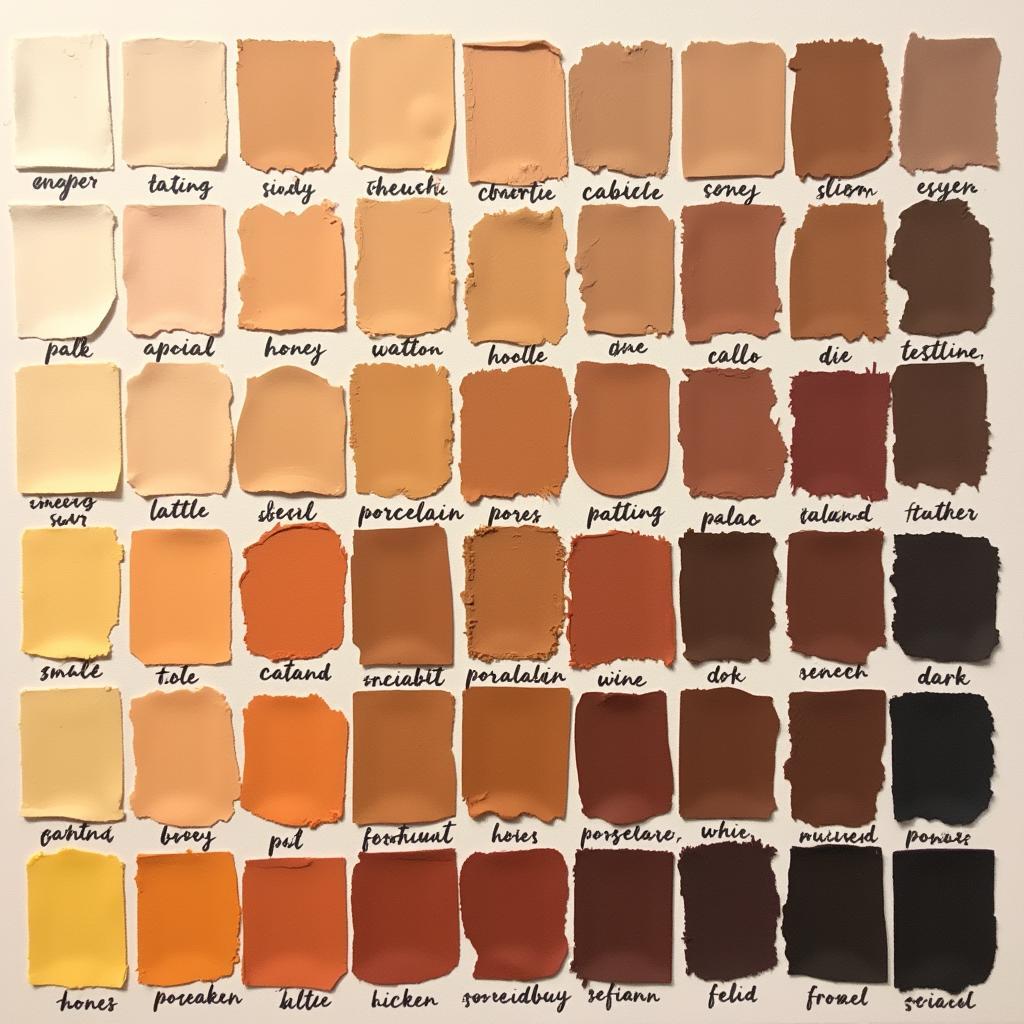Describing skin color in writing can be a delicate balance between accuracy, inclusivity, and avoiding harmful stereotypes. It’s essential to choose words that accurately reflect a character’s appearance without resorting to outdated or offensive language. This article will explore effective techniques for describing skin color in writing, offering writers practical advice and insightful examples to achieve vivid and respectful portrayals.
Choosing the right words to describe skin color is more than just finding the right shade; it’s about crafting authentic characters and building an inclusive narrative. Why is this so important? Because language shapes our perceptions. The words we use can perpetuate stereotypes or create a more nuanced understanding of the human experience. Let’s dive into the intricacies of how to describe skin color in writing.
Understanding the Nuances of Skin Tone
Skin color varies dramatically across the globe, influenced by genetics, sun exposure, and other factors. Recognizing this diversity is crucial. Avoid using simplistic or generic terms that fail to capture the richness of human skin tones. Instead, focus on descriptive language that evokes a clear image in the reader’s mind. Consider the undertones – are they warm, cool, or neutral? Are there any unique characteristics like freckles, birthmarks, or scars?
Moving Beyond Basic Descriptors
While terms like “light,” “medium,” and “dark” can be a starting point, they lack the specificity needed for truly compelling descriptions. Think about expanding your vocabulary to include words like “bronze,” “caramel,” “porcelain,” “ebony,” “honey,” or “alabaster.” These words offer a richer palette for portraying diverse skin tones.
What color is ink, you might ask? Well, ink comes in a vast array of colors, and just as with ink, human skin tones possess a remarkable spectrum. Understanding this allows writers to create more vibrant and realistic characters.
 Describing Skin Tone in Writing
Describing Skin Tone in Writing
Using Metaphors and Comparisons
Metaphors and similes can be powerful tools for describing skin color. Instead of simply stating a color, try comparing it to something evocative. For example, you could describe skin as “the color of warm sand,” “like polished mahogany,” or “as smooth as cream.” These comparisons create a more vivid and memorable image in the reader’s mind. However, be mindful of the cultural context of your comparisons and avoid anything that could be interpreted as exoticizing or fetishizing certain skin tones.
Avoiding Harmful Stereotypes
Certain descriptors, while seemingly innocuous, can perpetuate harmful stereotypes. Avoid associating skin color with negative traits or cultural assumptions. Focus on descriptive language that celebrates diversity and avoids reducing characters to their skin color. Remember, your goal is to create well-rounded characters, not reinforce harmful stereotypes.
Considering Cultural Context
Cultural context plays a vital role in how skin color is perceived and described. Be aware of the cultural background of your characters and how that might influence their own perceptions of their skin tone. What terms might they use to describe themselves or others? Researching and understanding these nuances can add depth and authenticity to your writing.
What is a color homophone? While it might seem unrelated, exploring language related to color can broaden your understanding of descriptive techniques.
Show, Don’t Tell
Instead of simply stating a character’s skin color, use descriptive language to show it. Describe how their skin looks in different lighting, how it feels to the touch, or how it contrasts with their clothing or surroundings. This immersive approach brings your characters to life and creates a more engaging reading experience.
Practical Tips and Examples
-
Focus on details: Instead of “dark skin,” consider “deep, rich brown skin with a warm undertone.”
-
Use action verbs: Instead of “she had pale skin,” try “her skin, pale as moonlight, seemed to glow in the dim light.”
-
Consider the character’s perspective: How do they see themselves and others?
-
Avoid clichés and stereotypes: Stay away from comparisons that reinforce harmful or outdated ideas.
You might be curious about what color is Scout Finch hair. Exploring these seemingly unrelated questions can spark your creativity and enhance your ability to describe details effectively.
 Practical Tips for Skin Tone Description
Practical Tips for Skin Tone Description
Conclusion
Describing skin color in writing requires sensitivity, precision, and a commitment to inclusivity. By following these guidelines and embracing descriptive language, you can create characters that are both authentic and respectful, contributing to a more diverse and inclusive literary landscape. Remember, describing skin color effectively is not just about getting the words right; it’s about celebrating the beauty and complexity of human diversity.
FAQ
- What are some alternative ways to describe skin color besides basic terms like “light” and “dark”?
- How can I avoid using language that perpetuates stereotypes when describing skin color?
- What are some effective metaphors and similes for describing skin tone?
- Why is it important to consider cultural context when describing skin color in writing?
- How can I “show” skin color rather than just “tell” it in my writing?
- What are some common mistakes to avoid when describing skin color?
- How can I ensure my descriptions of skin color are inclusive and respectful?
Need support? Contact us at Phone: 0373298888, Email: [email protected], or visit us at 86 Cau Giay, Hanoi. We have a 24/7 customer support team.

